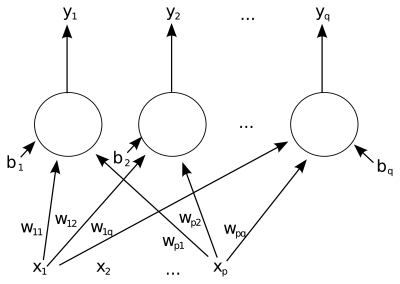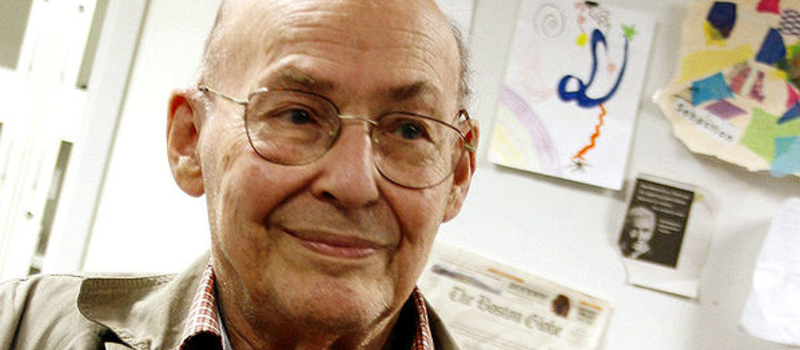Marvin Minsky, one of the early pioneers of neural networks, died on Sunday at the age of 88.
The obituary in the Washington Post paints a fantastic picture of his life. Minsky was friends with Richard Feynman, Isaac Asimov, Arthur C. Clarke, and Stanley Kubrick. He studied under Claude Shannon, worked with Alan Turing, had frequent conversations with John Von Neumann, and had lunch with Albert Einstein.

Minsky’s big ideas were really big. He built one of the first artificial neural networks, but was aiming higher — toward machines that could actually think rather than simply classify data. This was one of the driving forces behind his book, Perceptrons, that showed some of the limitations in the type of neural networks (single-layer, feedforward) that were being used at the time. He wanted something more.
Minsky’s book The Society of Mind is interesting because it reframes the problem of human thought from being a single top-down process to being a collaboration between many different brain regions, the nervous system, and indeed the body as a whole. This “connectionist” theme would become influential both in cognitive science and in robotics.
In short, Minksy was convinced that complex problems often had necessarily complex solutions. In research projects, he was in for the long-term, and encouraged a bottom-up design procedure where many smaller elements combined into a complicated whole. “The secret of what something means lies in how it connects to other things we know. That’s why it’s almost always wrong to seek the “real meaning” of anything. A thing with just one meaning has scarcely any meaning at all.”
 Minsky was a very deep thinker, but he kept grounded by also being a playful inventor. Minsky is credited with inventing the “ultimate machine” which would pop up in modern geek culture and shared numerous times on Hackaday as the “most useless machine”. He inspired Claude Shannon to build one. Arthur C. Clarke said, “There is something unspeakably sinister about a machine that does nothing — absolutely nothing — except switch itself off.”
Minsky was a very deep thinker, but he kept grounded by also being a playful inventor. Minsky is credited with inventing the “ultimate machine” which would pop up in modern geek culture and shared numerous times on Hackaday as the “most useless machine”. He inspired Claude Shannon to build one. Arthur C. Clarke said, “There is something unspeakably sinister about a machine that does nothing — absolutely nothing — except switch itself off.”
He also co-designed the Triadex Muse, which was an early synthesizer and sequencer and “automatic composer” that creates fairly complex and original patterns with minimal input. It’s an obvious offshoot of his explorations in artificial intelligence, and on our bucket list of must-play-with electronic instruments.
Minsky’s web site at MIT has a number of his essays, and the full text of “The Society of Mind”, all available for your reading pleasure. It’s worth a bit of your time, not just in memoriam of a great thinker and a wacky inventor, but also because we bet you’ll see the world a little bit differently afterwards. That’s a legacy that lasts.
















Can’t forget his role as a founder of the MIT Media Lab
One summer while milling about MIT I Minsky’s office. I asked two students if he was around. One said he was on vacation. The other, under his breath said something like, he’s kind of famous don’t share information about him. I knew of him thanks to Steven Levy’s tomb “Hackers” which helped me realize I wasn’t alone in a sea of Luddites.
I found his office, that is.
I tried to contact him about a year ago to get information about something he’s barely known for: the space fountain. Being one of the people bringing the idea up I hoped he’d have a copy of the original “Star Bridge” paper by Roderick Hyde.
I didn’t even expected an answer, and also got none, but this is now final, sadly.
I am currently trying to do the same thing, to get hold of the original design details worked out by Rod Hyde. Did you manage to find it?
According to Robert Forward, details “down to the design of the transistors used to switch the accelerator currents” had been worked out by Hyde.
Now that I’ve heard that Muse, I really want to build one. The patent schematics seem like they are missing something; though, maybe I’m just not used to block diagrams like that.
I actually had access to an original Muse in the late ’70’s very strange bit of kit. You might try this – http://trovar.com/muse/index.html I couldn’t get it to install under wine but runs OK on XP and seems to work with 7 as well. As far as a hardware build like the original, best of luck, would have been all TTL stuff would be my guess, given the vintage.
You really ought to cite images you get from Wikipedia IMO. Not citing a freely licensed source is just using it without permission.